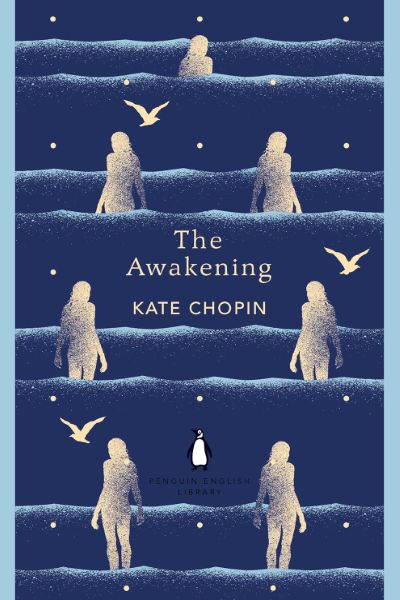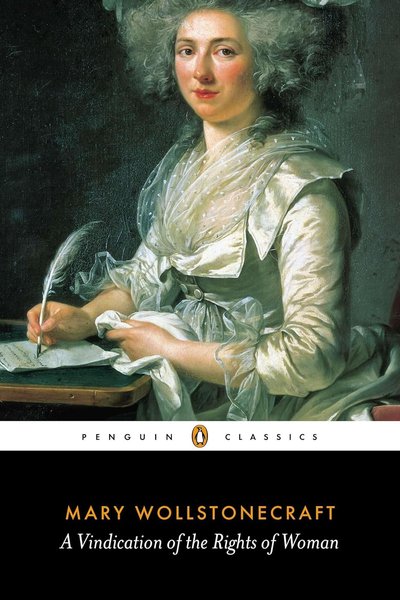The Awakening
No feminist reading list is complete without this 1899 novella. This early proto-modernist story follows Edna Pontellier, a wealthy New Orleans housewife who begins to contemplate what life might offer beyond her narrow roles as wife and mother.

📝 Book Review
In late 19th-century American literary history, Kate Chopin’s “The Awakening” strikes like lightning, shocking Victorian moral sensibilities with its bold themes and advanced consciousness. Published in 1899, this novella tells the story of Edna Pontellier, an upper-class New Orleans woman’s journey of spiritual awakening and self-discovery. Though it faced severe criticism and censorship upon publication, effectively ending Chopin’s literary career, “The Awakening” was rediscovered in the 1970s and has since become an American literary classic and cornerstone of feminist literature.
Through Edna’s story, Chopin explores women’s predicament in patriarchal society, the conflict between personal freedom and social responsibility, and questions of female sexuality and autonomy. These themes were revolutionary for their time and remain powerfully relevant today. “The Awakening” is not merely a novel about individual rebellion but a profound critique of entire social structures and gender norms.
The Victorian “Perfect Woman” Myth
“The Awakening” is set in late 19th-century New Orleans, a unique Southern American city infused with French Creole cultural influence. In this society, expectations for women were clear and strict: they should be devoted wives and mothers, angels of the home, ornaments for their husbands. Through detailed depiction of this environment, Chopin reveals the oppressive nature of Victorian “True Woman” ideology.
Edna initially seems to perfectly fit this model: married to wealthy businessman Léonce Pontellier, with two children and a comfortable life. But Chopin gradually reveals the emptiness and oppression beneath this surface perfection. Edna feels she’s playing a role rather than truly living.
Other female characters in the novel—the perfect Creole mother Adèle Ratignolle and independent pianist Mademoiselle Reisz—represent two possible extreme choices for women: complete self-sacrifice or complete social marginalization. Edna attempts to find a third path between these two, but ultimately discovers this is nearly impossible within the social structure of her time.
Multiple Dimensions of Awakening
Edna’s “awakening” is multilayered, encompassing spiritual, emotional, sexual, and artistic awakening. Chopin skillfully interweaves these different dimensions, presenting the complex process of a woman’s consciousness gradually awakening.
Spiritual awakening begins during the summer at Grand Isle. The ocean becomes a symbol of freedom and infinite possibility; Edna’s experience learning to swim marks a crucial turning point. In the water, she first feels the power of controlling her own body and destiny. This bodily autonomy extends to the spiritual level as she begins questioning long-accepted social norms and values.
Emotional awakening unfolds through her relationship with Robert Lebrun. This isn’t merely a romantic story but a process of Edna discovering her capacity for deep emotion. She realizes her marriage lacks genuine emotional connection; her relationship with her husband resembles a social contract more than a loving union.
Sexual awakening is the novel’s most controversial aspect. Edna not only acknowledges her sexual desires but actively pursues their satisfaction. Her relationship with Alcée Arobin is purely physical—an extremely bold depiction for literature of that era. Chopin refuses to demonize or romanticize female sexuality, presenting it instead as a natural part of humanity.
Art as Self-Expression
Edna’s pursuit of painting represents an important part of her search for self-expression and independent identity. Artistic creation provides her an escape from social roles, a medium for authentic self-expression. Through this theme, Chopin explores questions of female creativity and how society limits women’s artistic pursuits.
In the 19th century, women’s artistic talents were typically viewed as decorative pastimes rather than serious professional pursuits. Edna’s attempt to transform painting from amateur hobby to professional practice itself challenges gender norms. Her artistic pursuit develops parallel to her overall awakening process, reflecting changes in her inner world.
Mademoiselle Reisz’s image as a professional musician provides Edna with a possible model while also showing the price of choosing an artistic career. Mademoiselle Reisz is independent and talented but also lonely and socially marginalized. This binary suggests that in that society, women seemed forced to choose between art/self-realization and social acceptance/relationships.
Complex Presentation of Motherhood
“The Awakening’s” treatment of motherhood is complex and nuanced, avoiding simple idealization or demonization. Edna loves her children but refuses to sacrifice her entire identity for them. This stance was extremely radical for its time, when motherhood was viewed as women’s highest calling and natural instinct.
Chopin presents the contradictory nature of maternal love through Edna. Edna says she would give her life for her children but not herself. This distinction—between life and self—is profound. It suggests identity and existence are more important than mere biological life, that personal integrity shouldn’t be completely consumed by any relationship, even mother-child bonds.
Adèle Ratignolle’s image as the “perfect mother” contrasts with Edna. Adèle completely immerses herself in the maternal role and seems fulfilled by it. But Chopin’s descriptions suggest this satisfaction may be partly performative, resulting from internalized social expectations. Through contrasting these two characters, Chopin questions the concept of maternal instinct, suggesting expressions of motherhood are socially constructed.
The Importance of Economic Independence
Edna’s move from her husband’s house, attempting to maintain independent life through painting sales and gambling winnings, carries deep symbolic significance. Economic independence forms the foundation of personal autonomy, but in the late 19th century, married women had almost no economic rights. Their property belonged to their husbands; they rarely had opportunities to earn their own income.
Through Edna’s attempts at economic independence, Chopin explores the relationship between money and freedom. Though small and humble, the “pigeon house” is Edna’s own space, maintained with her own money. This physical and economic independence concretely manifests her spiritual independence.
However, Chopin also realistically shows the difficulties of economic independence. Edna’s income sources are unstable; though her artistic talent is real, it’s insufficient to provide reliable livelihood. This economic vulnerability reflects women’s structural disadvantage in patriarchal capitalist society.
Natural Imagery’s Symbolic System
Chopin creates a rich symbolic system in “The Awakening,” with natural imagery at its core. The ocean is the most important symbol, representing freedom, the unconscious, death, and rebirth. Edna’s relationship with the ocean runs throughout the novel, from initial fear to gradual intimacy, finally to complete merger.
Bird imagery also appears repeatedly. The novel opens with a caged parrot saying “Get out! Get out! For God’s sake!”—foreshadowing Edna’s desire for freedom. The image of a bird with broken wings falling by the seaside hints at her ultimate fate. Birds traditionally symbolize soul and freedom, but Chopin shows how this freedom has its wings clipped within society’s cage.
Music, particularly Chopin’s music (the composer sharing the author’s surname), acts as a catalyst in the novel. Music awakens Edna’s deep emotions and desires, representing a form of expression beyond language, pure emotional experience. Mademoiselle Reisz’s performance scenes mark key moments in Edna’s awakening process.
Dialectic of Language and Silence
Chopin’s treatment of language and silence is subtle yet powerful. Edna often finds herself unable to express inner feelings in words; this aphasia reflects the rupture between female experience and mainstream discourse. Patriarchal language systems cannot adequately express female subjective experience.
The novel repeatedly describes Edna falling into contemplation or “dream” states. These moments aren’t blanks or absences but filled with unspeakable meaning. Through this technique, Chopin suggests women’s inner lives often exist outside language, in the gaps of official discourse.
Simultaneously, Edna’s process of learning to express herself—whether through art or action—forms an important part of her awakening. Her transformation from an almost silent woman to someone capable of saying “no” is itself revolutionary.
Subversion of Gender Roles
“The Awakening” systematically subverts Victorian gender role expectations. Edna refuses to play the devoted wife and mother; she pursues her own desires, ignores social etiquette, and ultimately chooses death over submission. This subversion occurs not through direct political declarations but through accumulation of small daily rebellions.
Léonce Pontellier represents the Victorian ideal husband: successful, generous, “tolerant” toward his wife. But Chopin reveals this “ideal’s” oppressive nature. Léonce views Edna as property; his “tolerance” is actually condescending control. He cannot understand Edna’s needs as an independent individual.
Though Robert Lebrun awakens Edna’s emotions, he’s ultimately bound by social norms. He leaves Edna because she’s “another man’s wife,” showing that even relatively progressive men have internalized ownership concepts. His traditional views create irreconcilable conflict with Edna’s newly acquired freedom consciousness.
Multiple Interpretations of the Ending
“The Awakening’s” ending—Edna walking into the sea—is one of literary history’s most controversial and discussed conclusions. This ending allows multiple interpretations: Is it failure or victory? Despair or liberation? Weakness or strength?
From one perspective, Edna’s death can be understood as expression of failure and despair. She cannot find space to survive in the real world, cannot reconcile conflicts between personal freedom and social responsibility. Her death seems to confirm patriarchal society’s power, showing individual rebellion’s powerlessness.
But from another perspective, her death can be understood as the ultimate autonomous act. In a world denying her choice, she chooses her own ending. She refuses compromise, refuses to return to false life. In this sense, her death is a radical act of freedom.
Chopin’s description is deliberately ambiguous. Edna thinks of her childhood in final moments, suggesting some kind of return or cycle. She feels “no fear,” possibly indicating acceptance or liberation. This ambiguity itself is part of the novel’s artistic achievement; it refuses to provide simple moral judgment.
Innovation in Literary Style
“The Awakening” shows characteristics of transition to modernism in literary style. Chopin uses impressionist techniques, constructing scenes through sensory details and emotional atmosphere rather than relying on traditional plot development. This style particularly suits expressing subtle changes in Edna’s inner world.
The novel’s rhythm is carefully controlled, from Grand Isle’s lazy summer days to New Orleans’s increasingly frantic city life, finally to the seaside ending. This rhythmic variation reflects intensification of Edna’s inner conflict.
Chopin’s prose style fuses realist social observation with romantic emotional intensity. She can describe a social dinner party while deeply exploring the protagonist’s existential predicament. This stylistic fusion makes the novel both social document and psychological exploration.
Critical Reception History
“The Awakening’s” reception history itself tells a story about literary censorship and social change. Upon publication in 1899, the novel immediately sparked controversy. Critics condemned it as immoral, morbid, unpleasant. St. Louis libraries removed it from shelves, Chopin was ostracized from social circles, and her literary career essentially ended.
This intense reaction precisely proves the novel touched society’s sensitive nerves. It threatened Victorian gender order, questioned the sanctity of marriage and motherhood, openly discussed female sexual desire. For contemporary readers, Edna’s story wasn’t merely fiction but dangerous real possibility.
In the late 1960s and early 1970s, with second-wave feminism’s rise, “The Awakening” was rediscovered. Feminist scholars recognized the novel’s pioneering value, incorporating it into the American literary canon. This reevaluation changed not only perceptions of Chopin but understanding of American literary history.
Contemporary Significance
Against the backdrop of #MeToo and global women’s rights movements, “The Awakening’s” themes seem especially relevant. Edna’s struggle for bodily autonomy, her resistance to unwanted sexual attention, her refusal to be defined solely through relationships with men—these are all core issues in contemporary feminist discussions.
The novel’s complex portrayal of motherhood is also relevant in today’s debates about whether to have children. Edna’s predicament reminds us that women’s identity shouldn’t be reduced to a single role, no matter how socially valued that role may be.
In a world where women’s rights still face challenges, “The Awakening” continues to serve as both warning and inspiration. It warns us of the social costs of suppressing individual freedom while inspiring us to continue fighting for true gender equality.
Today, “The Awakening” remains a powerful literary work, not only for its historical importance but for its continuing relevance. Edna Pontellier’s story reminds us that true freedom requires not just legal reform but fundamental transformation of social attitudes. In this sense, her awakening continues, with each generation of readers discovering new meaning and revelation in her story.
Book Info
🛒 Get This Book
 Buy on Amazon
Buy on Amazon Related Books
Book Discussion
Share your thoughts and opinions on this book and exchange insights with other readers
Join the Discussion
Share your thoughts and opinions on this book and exchange insights with other readers
Loading comments...


